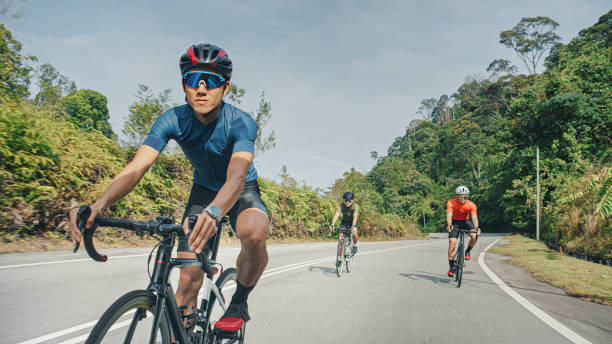
Calculating your cycling speed can help you plan your rides and track your progress.
Whether you're a beginner or an experienced cyclist, understanding how to calculate your biking pace is essential for setting goals and improving your performance.
Let's see how our calculator will help you elevate your cycling distance pace.
To calculate your cycling speed, you can use our Cycling Speed Calculator.
Here’s how it works:
Enter your total cycling time in hours, minutes, and seconds.
Specify the distance you covered during your ride (you can input it in meters or kilometers).
The calculator divides the total distance by the total time to determine your average cycling speed.
The result is displayed in kilometers per hour (km/h).
The calculator also provides your cycling pace, indicating how long it takes to cover one kilometer.
Calculating cycling speed means figuring out how fast you're going when you ride your bike. It's important because it helps you set goals for your rides, see how you're improving over time, and plan for races or events.
Knowing your speed also helps you stay safe and make smart decisions while riding. It's like knowing how fast you're driving a car - it helps you navigate and enjoy the ride better.
Depending on your fitness level, your pace can vary.
Here’s a rough comparison based on fitness levels:
Besides your level of preparation, there are other factors that influence your race pace. Let's check them out.
Here are some important aspects that can affect your cycling pace.
Riding on flat roads allows for faster speeds compared to uphill climbs or rough terrain. Uphill units will naturally slow you down, while downhill stretches can increase your power and speed.
Headwinds can significantly decrease your cycling speed, while tailwinds can provide a helpful push. The direction and strength of the wind can impact your pace, especially on longer rides.
The type and condition of your bike, as well as your gear, can influence your speed.
Aerodynamic bikes, lightweight frames, and properly inflated tires can all contribute to faster cycling speeds.
As we've already discussed, your fitness level and cycling experience play a significant role in determining your pace. As you become more experienced and physically fit, you'll likely increase your average speed over time.
Cadence is the number of pedal revolutions per minute (RPM). Maintaining an optimal cadence can help you pedal efficiently and sustain your pace for the entire race distance.
Extreme temperatures, humidity, and heat can affect your performance, rolling resistance, and energy levels, impacting your cycling pace.
For example, hot and humid conditions may lead to fatigue more quickly, while rain or snow can make roads slippery and reduce traction.
Now, you can estimate your current desired pace (for example, if you're getting ready for a triathlon and want to calculate bike leg pace) with our calculator.
Feel free to contact us if you have any questions or comments. Happy cycling!